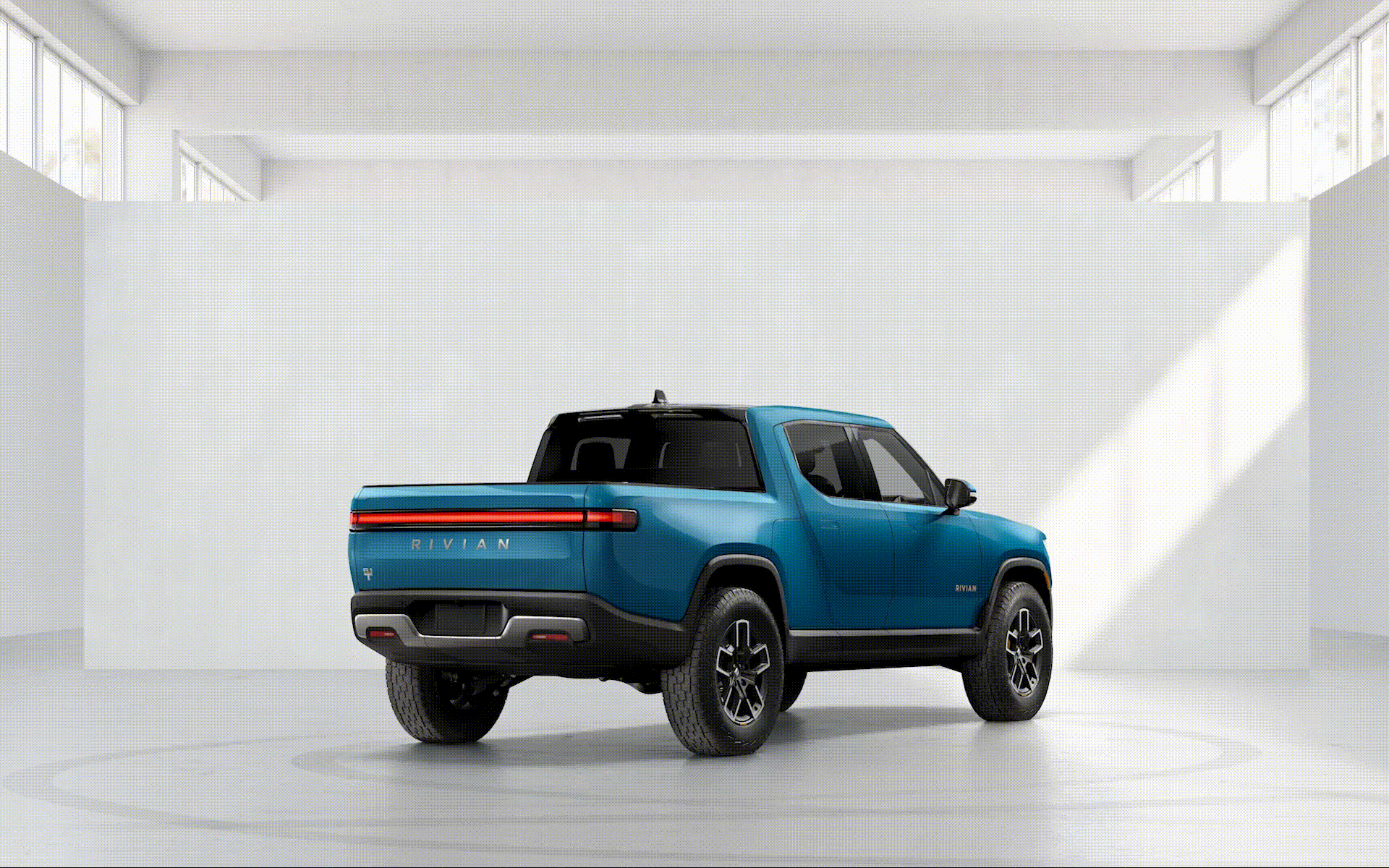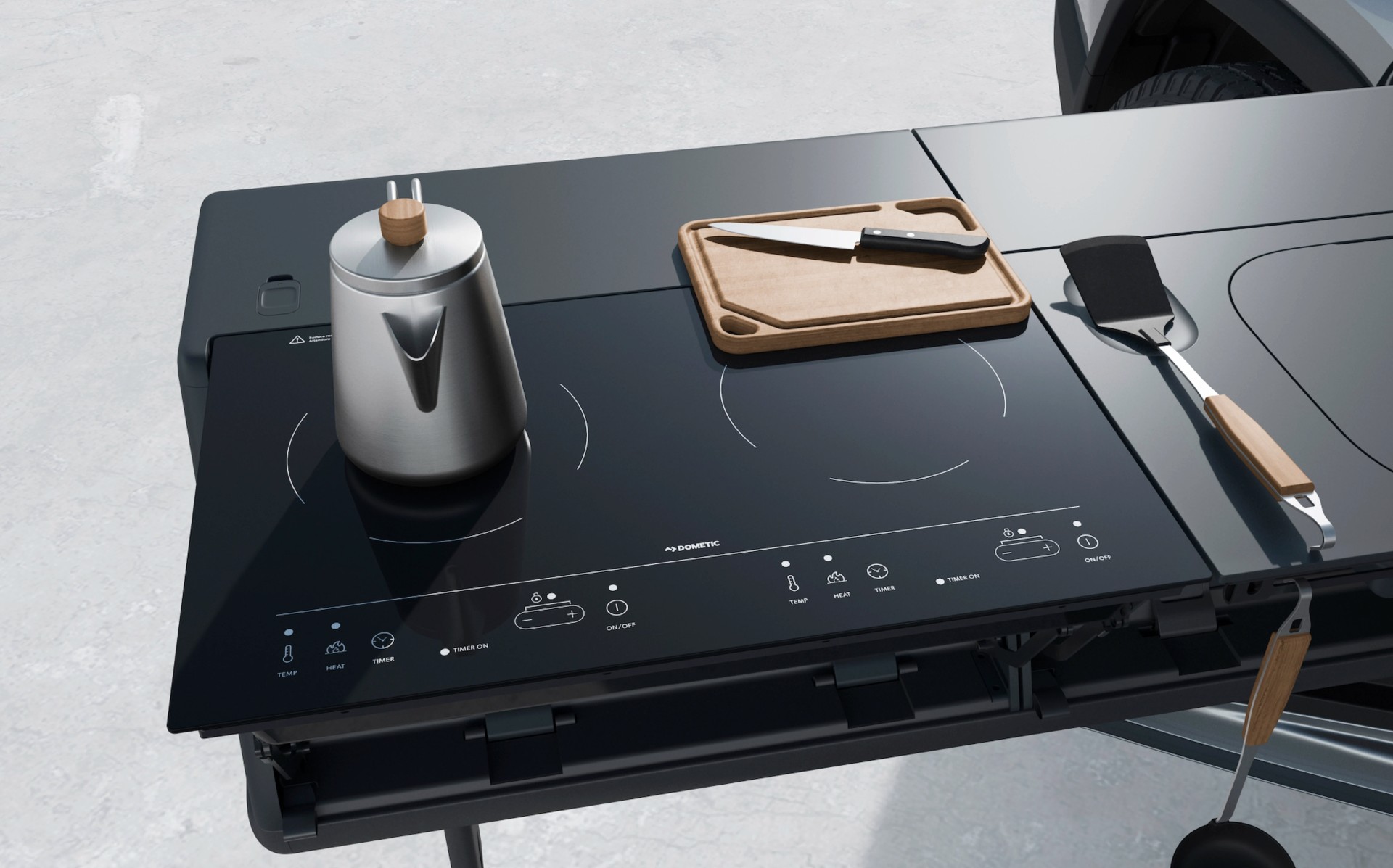

News
Rivian pushes R1T deliveries to July, updates standard features and Drive program
Rivian has provided reservation holders for their Launch Edition R1T with a new update for deliveries that will now take place in July, one month later than previously expected. Along with the newly revised date of delivery, Rivian has updated several standard features for the all-electric truck and revised its Drive program.
July Deliveries and Buyer Contact
Rivian now states that initial deliveries of the R1T will begin in July and should be completed by next Spring for its Launch Edition of the R1T and R1S. Rivian Guides will begin contacting pre-orderers through email and will also call reservation holders to discuss the configuration of their vehicle, along with the estimated time of delivery.
Rivian was set to begin delivering vehicles last year, but production was delayed due to the COVID-19 pandemic. After the automaker slated production to begin this year, deliveries were expected to begin in June, but it appears unexpected delays have forced Rivian to push them back to July.
The company has also announced the addition of Rivian Adventure Gear in its configurator. Everything from the Rooftop Tent, to a Rivian Wall charger, is available in the configurator for owners to purchase as add-ons to their new all-electric vehicles.
Credit: Rivian
New Standard Features, and Revised Add-Ons
Rivian has also revised several upgrades that were originally standard with the Launch Edition vehicles. The Off-Road Upgrade, which reinforced the underside of the body with a protective shield, dual front bumper tow hooks and an air compressor, is now optional for Launch Edition and Adventure Package reservation holders.
“Over the past months, we’ve talked with many of you about the Electric Adventures you’ll soon be taking. While the trips all sound exciting, they don’t always involve extreme off-roading — the standard capability of our vehicles is more than enough,” Rivian wrote in a blog post. Deselecting the options will decrease the price of the vehicle by $2,000.
However, the Air Compressor add-on is now going to be standard on all Rivian vehicles. This is a great touch in case you catch a flat or just need to refill a tire to the preferred air pressure level during the drive. Even more so, bike riders who need some air pressure could also see some benefit from having the standard air compressor installed on their vehicle.
Additionally, the Rivian Camp Kitchen will now include the Snow Peak Kitchen Set, a 30-piece, ultralight set of plates, pots, pans, utensils, silverware, and cups for up to four people. This will complement the Rivian stovetop that comes with the $5,000 Camp Kitchen add-on.
Credit: Rivian
Drive Program to begin in August
The Drive Program from Rivian will also launch in August and will give prospective buyers or EV enthusiasts the opportunity to experience an R1T or R1S without having to head to a showroom.
“Our drive program includes two types of experiences — at-home drives and tour events. For our at-home drives, simply schedule the date and time that’s most convenient, and we will bring the vehicle to you,” Rivian described. “You can choose an in-depth walkaround by one of our team members or opt for a self-guided tour.”
What do you think? Let us know in the comments below, or be sure to email me at joey@teslarati.com or on Twitter @KlenderJoey.

News
Tesla starts showing how FSD will change lives in Europe
Local officials tested the system on narrow country roads and were impressed by FSD’s smooth, human-like driving, with some calling the service a game-changer for everyday life in areas that are far from urban centers.

Tesla has launched Europe’s first public shuttle service using Full Self-Driving (Supervised) in the rural Eifelkreis Bitburg-Prüm region of Germany, demonstrating how the technology can restore independence and mobility for people who struggle with limited transport options.
Local officials tested the system on narrow country roads and were impressed by FSD’s smooth, human-like driving, with some calling the service a game-changer for everyday life in areas that are far from urban centers.
Officials see real impact on rural residents
Arzfeld Mayor Johannes Kuhl and District Administrator Andreas Kruppert personally tested the Tesla shuttle service. This allowed them to see just how well FSD navigated winding lanes and rural roads confidently. Kruppert said, “Autonomous driving sounds like science fiction to many, but we simply see here that it works totally well in rural regions too.” Kuhl, for his part, also noted that FSD “feels like a very experienced driver.”
The pilot complements the area’s “Citizen Bus” program, which provides on-demand rides for elderly residents who can no longer drive themselves. Tesla Europe shared a video of a demonstration of the service, highlighting how FSD gives people their freedom back, even in places where public transport is not as prevalent.
What the Ministry for Economic Affairs and Transport says
Rhineland-Palatinate’s Minister Daniela Schmitt supported the project, praising the collaboration that made this “first of its kind in Europe” possible. As per the ministry, the rural rollout for the service shows FSD’s potential beyond major cities, and it delivers tangible benefits like grocery runs, doctor visits, and social connections for isolated residents.
“Reliable and flexible mobility is especially vital in rural areas. With the launch of a shuttle service using self-driving vehicles (FSD supervised) by Tesla in the Eifelkreis Bitburg-Prüm, an innovative pilot project is now getting underway that complements local community bus services. It is the first project of its kind in Europe.
“The result is a real gain for rural mobility: greater accessibility, more flexibility and tangible benefits for everyday life. A strong signal for innovation, cooperation and future-oriented mobility beyond urban centers,” the ministry wrote in a LinkedIn post.
News
Tesla China quietly posts Robotaxi-related job listing
Tesla China is currently seeking a Low Voltage Electrical Engineer to work on circuit board design for the company’s autonomous vehicles.

Tesla has posted a new job listing in Shanghai explicitly tied to its Robotaxi program, fueling speculation that the company is preparing to launch its dedicated autonomous ride-hailing service in China.
As noted in the listing, Tesla China is currently seeking a Low Voltage Electrical Engineer to work on circuit board design for the company’s autonomous vehicles.
Robotaxi-specific role
The listing, which was shared on social media platform X by industry watcher @tslaming, suggested that Tesla China is looking to fill the role urgently. The job listing itself specifically mentions that the person hired for the role will be working on the Low Voltage Hardware team, which would design the circuit boards that would serve as the nervous system of the Robotaxi.
Key tasks for the role, as indicated in the job listing, include collaboration with PCB layout, firmware, mechanical, program management, and validation teams, among other responsibilities. The role is based in Shanghai.
China Robotaxi launch
China represents a massive potential market for robotaxis, with its dense urban centers and supportive policies in select cities. Tesla has limited permission to roll out FSD in the country, though despite this, its vehicles have been hailed as among the best in the market when it comes to autonomous features. So far, at least, it appears that China supports Tesla’s FSD and Robotaxi rollout.
This was hinted at in November, when Tesla brought the Cybercab to the 8th China International Import Expo (CIIE) in Shanghai, marking the first time that the autonomous two-seater was brought to the Asia-Pacific region. The vehicle, despite not having a release date in China, received a significant amount of interest among the event’s attendees.
Elon Musk
Elon Musk and Tesla AI Director share insights after empty driver seat Robotaxi rides
The executives’ unoccupied tests hint at the rapid progress of Tesla’s unsupervised Robotaxi efforts.

Tesla CEO Elon Musk and AI Director Ashok Elluswamy celebrated Christmas Eve by sharing personal experiences with Robotaxi vehicles that had no safety monitor or occupant in the driver’s seat. Musk described the system’s “perfect driving” around Austin, while Elluswamy posted video from the back seat, calling it “an amazing experience.”
The executives’ unoccupied tests hint at the rapid progress of Tesla’s unsupervised Robotaxi efforts.
Elon and Ashok’s firsthand Robotaxi insights
Prior to Musk and the Tesla AI Director’s posts, sightings of unmanned Teslas navigating public roads were widely shared on social media. One such vehicle was spotted in Austin, Texas, which Elon Musk acknowleged by stating that “Testing is underway with no occupants in the car.”
Based on his Christmas Eve post, Musk seemed to have tested an unmanned Tesla himself. “A Tesla with no safety monitor in the car and me sitting in the passenger seat took me all around Austin on Sunday with perfect driving,” Musk wrote in his post.
Elluswamy responded with a 2-minute video showing himself in the rear of an unmanned Tesla. The video featured the vehicle’s empty front seats, as well as its smooth handling through real-world traffic. He captioned his video with the words, “It’s an amazing experience!”
Towards Unsupervised operations
During an xAI Hackathon earlier this month, Elon Musk mentioned that Tesla owed be removing Safety Monitors from its Robotaxis in Austin in just three weeks. “Unsupervised is pretty much solved at this point. So there will be Tesla Robotaxis operating in Austin with no one in them. Not even anyone in the passenger seat in about three weeks,” he said. Musk echoed similar estimates at the 2025 Annual Shareholder Meeting and the Q3 2025 earnings call.
Considering the insights that were posted Musk and Elluswamy, it does appear that Tesla is working hard towards operating its Robotaxis with no safety monitors. This is quite impressive considering that the service was launched just earlier this year.








